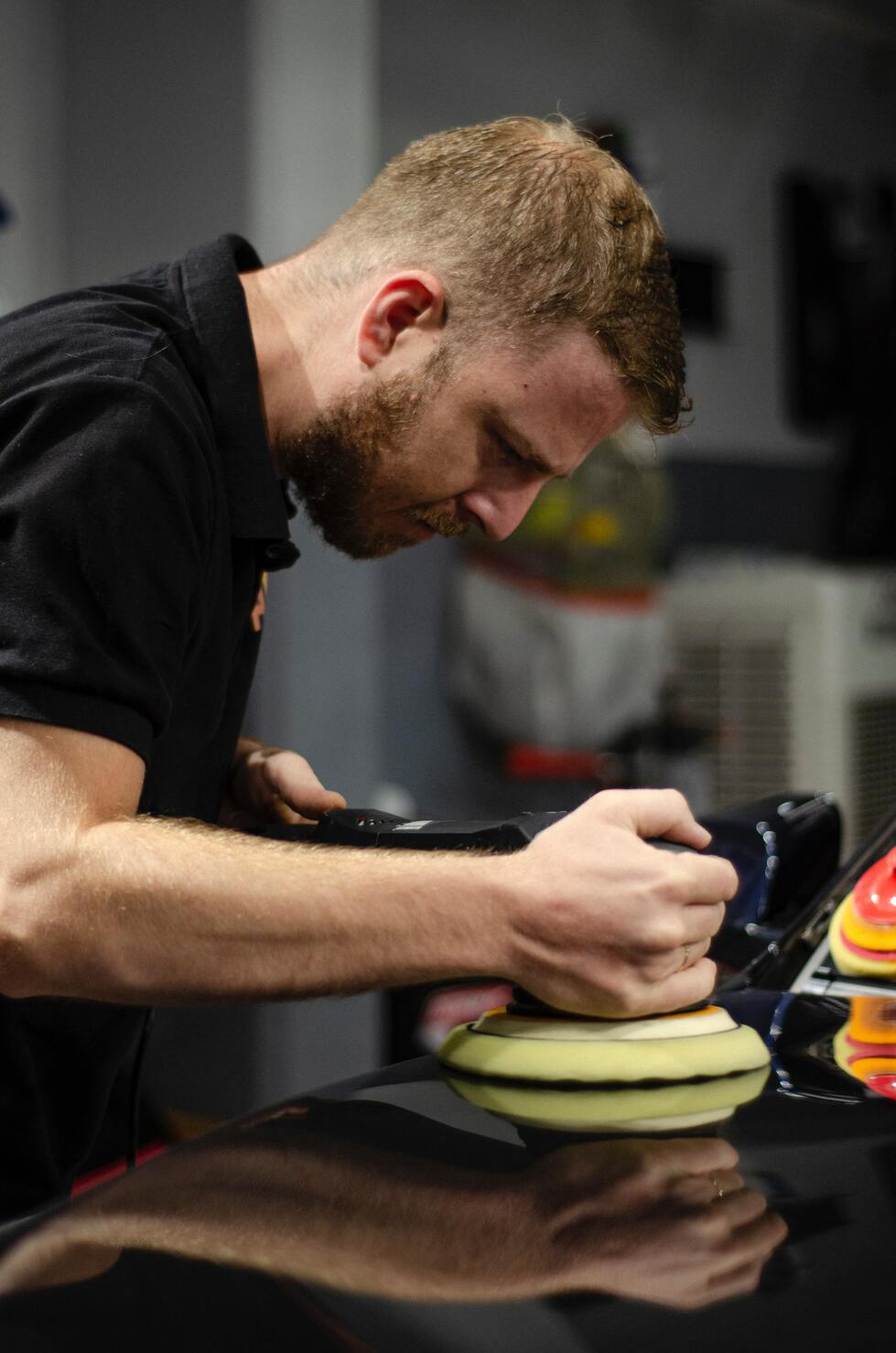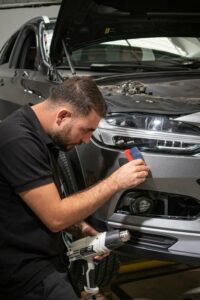
11 Jul Liquid vs. Vinyl Car Wrapping – Which is Better?
Liquid wrapping, sometimes called Plasti Dipping, is like wrapping your car with vinyl. They both provide another option to change the color of your vehicle and protect the original paint. Liquid wrapping is a polymer/vinyl-based, protective coating sprayed several layers thick onto the original paint on the car or other parts, like the wheels. Because the liquid wrap is a spray-on application instead of multiple vinyl pieces applied onto the vehicle, they are known for being seamless. Like a vinyl wrap, a liquid wrap can protect the original cosmetics of the car from light damage, rock chips, and scratches.
The vinyl vs. liquid vehicle wrap discussion is one that car enthusiasts have had since the inception of liquid wrapping. Although they can have different perks and applications for various people, vinyl wrapping has been around longer and is usually the preferred method. Vinyl wrapping seems more versatile and generally easier for a full car wrap. For wrapping wheels or smaller car components, liquid wrapping wins the vinyl vs. liquid vehicle wrap debate.
Which one looks better?
Liquid wraps can look immaculate if you are going for a single color or a glossy finish. You have plenty of options for solid colors with no designs if you want to go the liquid wrapping route. Some finish options for a liquid wrap are metallic, high-gloss, color-shifting, flat, satin, matte, or pearl. You can choose any color imaginable to pair with the best finish option to get your dream color. Although matte or satin finish options are possible with a liquid wrap, the best matte finishes come from a vinyl car wrap. Another drawback to liquid wraps, because they get sprayed onto the vehicle, is that it is impossible to get a custom design, pattern, or logo. For that, your only choice is a vinyl wrap.
Vinyl vs. liquid vehicle wrap for businesses or fleet vehicles is an obvious choice. The only option is a vinyl wrap if you need to display any business information, logos, or pictures. With a vinyl wrap, you can even wrap the windows with a perforated wrap, allowing you to see out, but from the outside, you see the design. Vinyl car wraps allow you to do more than just designs and matte finishes. You can choose any conceivable color or finish and customize the design!
Another core difference between vinyl vs. liquid car wraps is the thickness. If you are wrapping your car to change the color, but primarily for protection, you would want to choose a liquid wrap. The liquid wraps, having several coats of polymer, are quite a few times thicker than the vinyl wrap. Because of the thick wrap, the original cosmetics of the vehicle are more protected from light damage, scratches, and rock chips. If protection is your priority, get a ceramic coating for your wrap. You can get a ceramic coating with vinyl or liquid wraps. The purpose is to extend the life of the wraps by preventing them from drying out, getting scratches, or any other damage.
How long do you want it to last?
Vinyl and liquid wraps can last up to 5 years or even longer with a ceramic coating. Generally, liquid wraps last longer than vinyl wraps. The vinyl wrap on a daily driven car will last about three years. Most of what determines how long a wrap lasts is how well you take care of it. Of course, things like always being in the sun, or being a daily driver, will take a beating on your wrap. Vinyl and liquid car wraps have similar lifespans, but if longevity is your priority, liquid wrapping your vehicle is the best bet.
Removal
Like longevity, there is no clear outlier here of what one wins the vinyl vs. liquid vehicle wrap dispute. No matter what type of wrap you have, when you remove it properly, there will be no damage from the wrap. Although you should always have the help of professionals to remove a wrap, one benefit to having a liquid wrap is that you could take it off at home. Adhesives are what attach a vinyl wrap to the vehicle. Once you remove the vinyl wrap from the car, extra work is required to clean off the remaining residue. Professionals will know how to handle removing this residue without damage to the paint.
So, Vinyl or liquid? It is hard to determine what kind of wrap is better. Different scenarios call for specific wraps. A liquid wrap might be appropriate, depending on the application and what you need. For example, wrapping an entire car solely to protect it for a long time; or coating the wheels, console, or other components of a vehicle. Most of the time, vinyl wrapping will be what you need and have the simplest versatility to reduce headaches. If you want to do any custom patterns or need custom designs for your business, the only path is vinyl wrapping.




No Comments